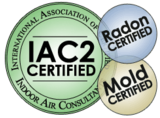Article below courtesy of Nick Gromicko and Kenton Shepard

- Ideally, a carefully maintained defensible space will not contain enough fuel to allow a wildfire to reach a house. Even if the space is breached, the fire will have been slowed and weakened, helping firefighters to defend the house.
- A defensible space provides an accessible area for fire trucks to park and firefighters to work during a structure fire.
- If there is a pond near a burning house, it can be used to replenish a fire truck’s water supply. The perimeter of the pond should be thinned of trees and brush sufficiently so that firefighters can access it.
The size requirements for defensible space vary by jurisdiction because the potential for wildfires varies by region. Buildings in forested areas of the Southwest need a much larger protective space than in New Jersey, for instance. As of 2006, California state law mandates a minimum of 100 feet of defensible space for houses in rural locations. Trees and shrubs surrounding a house should be trimmed and spaced apart a safe distance from one another. Chainsaws can be used to remove trees and branches, pruning shears to trim plants, and rakes for removing pine needles and other ground-level combustibles. Trees that are very close to the house should be removed because this is where fire-prevention is most critical. Vegetation can be plentiful towards the perimeter of the space if it is green and pruned.
Colorado State University divides defensible space into three categories in the following manner:
Zone 1: The first 15 feet from a home should be devoid of all flammable vegetation. Firewood and other flammable materials should not be stored in this region.
Zone 2: This area of fuel reduction should extend from Zone 1 outward to between 75 to 125 feet from the structure. Trees and large shrubs should be no less than 10 feet apart, especially in steep terrain. Trees must also be pruned to a height of 10 feet from the ground, and any “ladder fuels” (vegetation with vertical continuity) removed from the base of the trees. Grass, trees and shrubs in this region should be green and adequately spaced. Pine needles, dead leaves, branches, dead or dying vegetation and other flammable debris on the ground should be removed whenever they appear.
Zone 3: This region of traditional forest management is of no particular size, although it normally extends to the property limits. More trees are permitted here than in Zone 2, although their health and vigor should be maintained.
- You should obey all environmental protection laws while creating and maintaining defensible spaces. In particular, removal of vegetation should not interfere with the well-being of endangered species, air and water quality, or archaeologically significant resources. You may need to obtain a permit to cut down trees over a certain size, depending on local jurisdictions.
- Vegetation removal can cause soil erosion, especially in steep terrain. In areas that are prone to wildfire and soil erosion, it can be helpful to replace highly flammable plants and trees with less-flammable alternatives.

